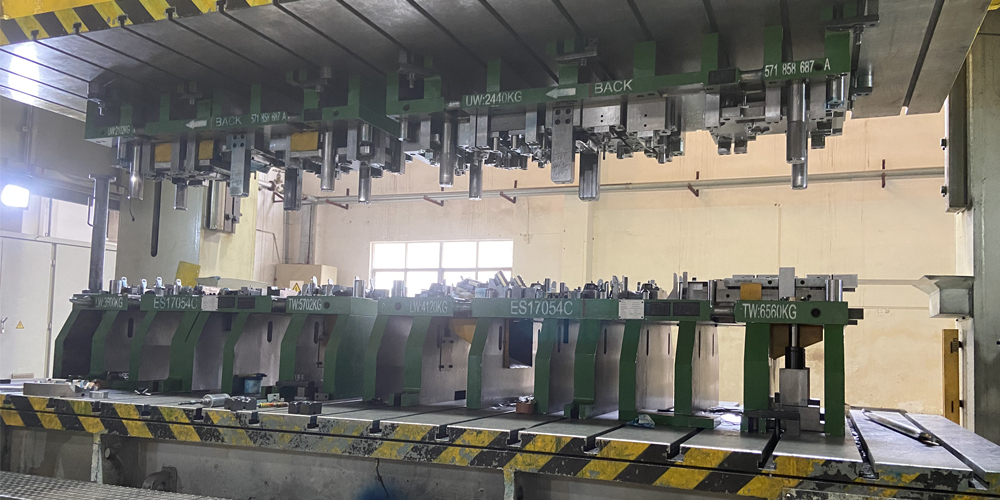Stamping die design is a critical aspect of metal forming and manufacturing processes, aimed at creating precise and repetitive shapes from sheet metal or other materials. This process is widely used in industries such as automotive, aerospace, and electronics. The key considerations and steps involved in designing a stamping die.
1. Understanding the Requirements:
The first step in stamping die design is to understand the specific requirements of the project. This includes the type of material being used, the desired part geometry, tolerances, production volume, and the type of stamping press to be employed.
2. Material Selection:
Choosing the right material for the die is crucial. Dies are typically made from tool steel or carbide due to their durability and wear resistance. The material choice depends on the anticipated production volume and the type of material to be stamped.
3. Part Design:
Designing the part to be stamped is fundamental. This involves creating a detailed CAD model of the part, including all dimensions, tolerances, and any special features. The part design directly influences the die design.
4. Die Type Selection:
There are various types of stamping dies, including blanking dies, piercing dies, progressive dies, and more. The choice of die type depends on the part’s complexity, size, and the required production rate.
5. Die Layout:
The die layout involves planning the arrangement of various components within the die, including punches, dies, and other tooling elements. This layout should optimize material utilization and minimize waste.
6. Die Components:
Key components of a stamping die include punches, which create the desired shape and dies, which provide support and shape to the material. Additional components, such as strippers, pilots, and springs, may be necessary for specific applications.
7. Material Flow Analysis:
Simulating the material flow within the die is essential for ensuring uniform part quality. Finite Element Analysis (FEA) and other simulation tools can help optimize the die design for even material distribution and reduced defects.
8. Tolerances and Surface Finish:
Tight tolerances are often required in stamping operations, so the die design must account for these requirements. Surface finish considerations are also crucial to prevent defects and ensure the final product’s quality.
9. Heat Treatment and Hardening:
To increase the die’s longevity and wear resistance, heat treatment processes such as quenching and tempering are applied to the selected die material. This step is crucial for maintaining precision over the die’s lifespan.
10. Prototype and Testing :
Before full-scale production, it’s essential to create a prototype die and test it rigorously. This helps identify and rectify any design flaws or performance issues.
11. Die Maintenance and Repair:
Once in production, regular maintenance is crucial to extend the die’s lifespan. Repairs and adjustments may also be necessary to ensure consistent part quality.
12. Cost Analysis:
Evaluating the cost of die production, including material, labour, and machinery, is essential for project viability. This analysis helps optimize the design to meet budget constraints.
13. Documentation and Records:
Maintaining comprehensive records of the die design, including CAD files, material specifications, and maintenance schedules, is essential for long-term traceability and efficient die management.
In conclusion, stamping die design is a complex and multifaceted process that requires careful consideration of material, part geometry, and production requirements. A well-designed die is essential for achieving high-quality stamped parts with precision and efficiency. Thorough planning, simulation, and testing are critical steps in ensuring the success of stamping die design projects.
Post time: Sep-28-2023



.png)
.png)